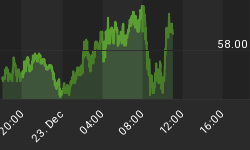Rice is an all important staple food in much of the world. In the past year, the price of rice has rocketed from under $11 to more than $19, and even above $20 in overnight electronic trading. These prices are now the cause of food riots around the world. In recent times they occurred in Guinea, Mauritania, Mexico, Morocco, Senegal, Uzbekistan and Yemen(NY Times,29 Mar 2008). In the Philippines, the government is worried about hoarding as that nation imports almost twenty percent of its rice consumption. Restrictions on global supplies are slowly developing. Rice producing countries are beginning to restrict exports in order to insure supplies for domestic consumers. Thailand, the largest exporter, is considering export restraints. The price of rice is only one measure of the global short supply situation in Agri-Food that will persist for a decade or more. Governments can print money and lower interest rates, but governments can not create Agri-Food.

Underlying the entire move to higher prices in Agri-Foods is the income growth arising out of economic expansion in Asia. That economic growth will certainly pulse with varying degrees of amplitude. It, however, is not going away. Agri-Food prices have moved to a permanently higher plateau. That said, investor emotions will regularly drive prices above short-term sustainable levels. In the chart, the price of rice is well above the top red line. That line is the mean price plus the standard deviation. Price of rice, as well as other Agri-Food prices, may be due for a period of consolidation and increased selectivity. Gold's price may be signaling that. If that is the case, a timely period for investigating Agri-Food investments may be at hand. Investors would be well advised to start looking for Agri-Food investments to add to their portfolio in the months ahead.
AGRI-FOOD THOUGHTS are from Ned W. Schmidt,CFA,CEBS, publisher of Agri-Food Value View, a monthly exploration of the Agri-Food grand cycle being created by China, India, and Eco-energy. To review a recent issue, write to agrifoodvalueview@earthlink.net.
















